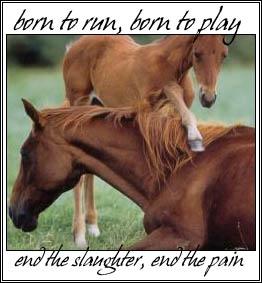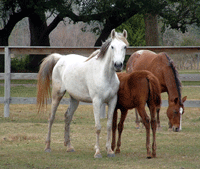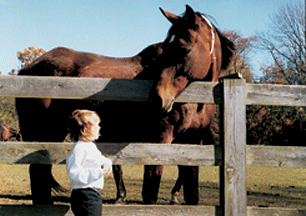Debunking the "Unwanted Horse" Myth*
In recent years some industry groups and other supporters of horse slaughter which consistently fight passage of theAmerican Horse Slaughter Prevention Act (AHSPA) have claimed that there exists a huge “unwanted horse” population in the United States.These organizations, which include the American Association of Equine Practitioners, the American Veterinary Medical Association and the American Quarter Horse Association, have been lobbying Congress to block passage of the AHSPA on the premise that slaughter offers a humane way to dispose of these animals, a necessary evil without which horses would be subjected to neglect, abandonment and abuse. In short, they argue that horse slaughter improves horse welfare. Ironically, these groups were largely silent on issues of equine welfare prior to introduction of the AHSPA. Yet now that the horse slaughter industry is seriously threatened the coalition’s partners are citing animal welfareas the basis for their pro-slaughter stance. The truth is that, no hard data exists on an "unwanted horse" population. The Unwanted Horse Coalition’s own website
states: "No accurate figures document how many unwanted horses actually exist, their age and sex, the breeds represented, how many are purebred versus grade, their most recent use, their value or what happens to them in the long run. Tens of thousands of horses that could be classified as unwanted are being sent to processing facilities in the U.S., Canada and Mexico each year." In short, the coalition has absolutely no evidence to support its claim that horses going to slaughter are "unwanted". What is clear is that killer buyers working for the slaughterhouses are outbidding other buyers at auction because they have a financial incentive to do so. The market for slaughter horses is set by the international demand for their meat in other countries, not by the number of "unwanted horses".
Here are the facts: Horse slaughter is a brutal, predatory business that purposely seeks out healthy, marketable horses. A U.S. Department of Agriculture study revealed that more than 92% of horses going to slaughter are in good condition. The notion that without horse slaughter there will be flood of abandoned horses is simply unfounded. When the number of horses slaughtered in the U.S. fell by approximately 90% between the early 1990s and the early 2000s there was no correlating increase in abandoned, neglected and abused horses. Likewise, equine cruelty investigators in Illinois report that horse abandonment and abuse cases actually dropped during the temporary closure of the Cavel slaughter plant in the early 2000s (the plant is now permanently shut under state law). In California, not only was there no increase in horse abuse and neglect cases following passage of the state’s stringent anti-horse slaughter law in 1998, but there was a 34% drop in horse theft. Horse slaughter actually encourages abuse and neglect. Unscrupulous owners who tire of caring for their horses have the easy outlet of dumping their horses into slaughter. Cruelty investigators report multiple instances where owners stop feeding or providing veterinary care for their horses prior to selling them to slaughter. Such neglect is illegal. There is no statistical evidence to support claims that more horses are being abandoned following closure of the domestic horse slaughter plants. Abandonment is illegal and any instances of abandoned equines (or other animals) should be reported and prosecuted. Ultimately, those supporting horse slaughter – allegedly in the name of equine welfare - suggest that the horse slaughter industry provides a service for the humane disposal of unwanted horses.
Nothing could be further truth. While there may not be a home for every horse, horse slaughter
has no place in a society that cares for its horses. Responsible breeding and ownership, coupled with veterinarian-administered euthanasia when necessary, are the answer; not slaughter.
Subscribe to:
Post Comments (Atom)







No comments:
Post a Comment